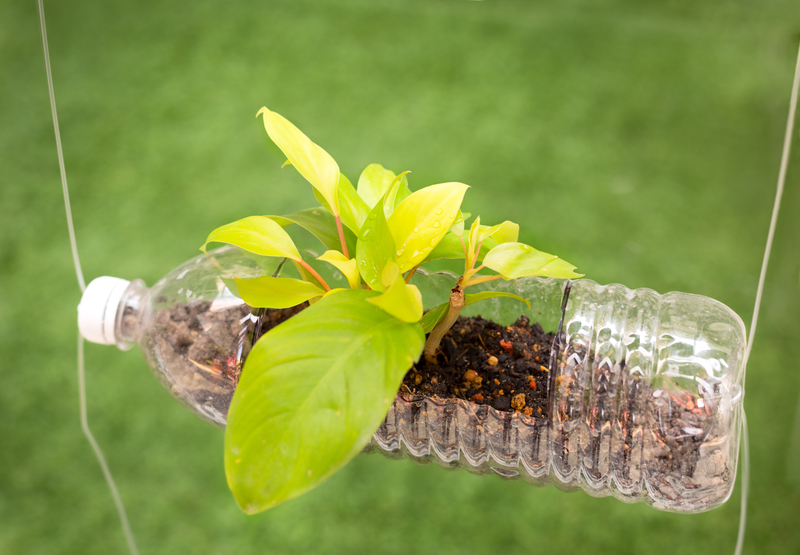Responsible Methods for Getting Rid of Used PPE
Personal Protective Equipment--commonly known as PPE--has become an essential part of daily life, especially following recent global events. From masks and gloves to face shields and gowns, these items play a crucial role in maintaining personal and public health. But what happens after these items are used? Responsible disposal and recycling of used PPE is not just an environmental consideration; it's a public health imperative.

Understanding PPE and Its Environmental Impact
Personal Protective Equipment is designed for single or limited use in most settings, generating a substantial volume of waste. Improper disposal--such as tossing used masks onto sidewalks or mixing gloves with household waste--can lead to environmental contamination and health risks. With millions of PPE items used globally every day, adopting responsible PPE disposal methods has never been more critical.
- Used PPE can take decades to degrade, contributing to landfill growth.
- PPE materials, primarily plastics, may leach harmful chemicals into soil and water.
- Improperly discarded items may harbor pathogens long after disposal.
- Wildlife can suffer from entanglement or ingestion of PPE waste.
Why Proper PPE Disposal Matters
Proper PPE disposal ensures environmental sustainability and public safety. It minimizes the risk of spreading infections and reduces the environmental footprint of the protective gear that keeps us safe. Both individuals and organizations have a vital role to play in this effort.
The Risks of Improper PPE Disposal
- Health Hazards: Used PPE may carry harmful viruses or bacteria, risking further infection among waste handlers and the public.
- Pollution: PPE materials like polypropylene contribute to plastic pollution, threatening ecosystems.
- Blocked Sewers: Flushing PPE down toilets can clog pipes, leading to sewage overflows and expensive maintenance.
Main Types of PPE and Their Disposal Challenges
- Masks: Most are made of multiple layers, including plastics, and are not designed for standard recycling systems.
- Gloves: Latex, nitrile, and vinyl gloves often cannot be recycled in municipal programs due to contamination risks.
- Gowns & Aprons: Many are plastic-based, and if used in medical settings, may require special hazardous waste treatment.
- Face Shields: Made from hard plastics, which might be recyclable if properly cleaned and separated, but are often disposed of in general waste.
Best Practices for the Responsible Disposal of Used PPE
1. Dispose of Used PPE in Designated Bins
The most basic but crucial practice is to always dispose of PPE in clearly marked waste bins--not in recycling, compost, or on the street. Many organizations and public areas have established specially labeled bins for PPE waste.
- At home: Double-bag used PPE before placing it in general waste bins.
- In public places: Use labeled public bins specifically for PPE.
- In workplaces, clinics, and hospitals: Adhere to local hazardous waste protocols.
2. Never Litter or Flush PPE
Tossing masks or gloves on the ground or flushing them down toilets is highly irresponsible. These practices pollute water sources, pose hazards to animals, and may spread pathogens.
3. Consider the Contamination Level
PPE used in higher-risk environments, such as hospitals treating infectious diseases, must be treated as medical hazardous waste. This usually involves incineration or specialized disposal processes to ensure pathogens are destroyed and do not enter landfill or recycling systems.
Advanced PPE Disposal Solutions
As awareness grows, innovative solutions for eco-friendly PPE disposal are emerging. Here are some responsible methods for getting rid of used PPE that go beyond simply tossing them in the trash:
Recycling Programs for PPE Waste
- Specialist Recycling Firms: Some companies, such as TerraCycle, offer PPE recycling boxes. These boxes collect used masks, gloves, and eyewear. Once full, they are shipped off to processing facilities where PPE items are cleaned, shredded, and repurposed into new products like outdoor furniture and construction materials.
- Hospital Collection Systems: Certain healthcare facilities are trialing closed-loop systems, collecting and safely sterilizing or recycling PPE to limit landfill waste.
Biodegradable PPE
- Emerging Materials: New forms of PPE made from plant-based polymers or other compostable materials are increasingly available. While not yet mainstream, using biodegradable PPE and disposing of it in industrial composting facilities can drastically reduce environmental impact.
- Check Local Capabilities: Always confirm whether your area supports the commercial composting necessary for these products.
Community Collection Points
- Drop-Off Locations: Some local councils and community centers now have PPE collection points. These allow households to deposit their used items for bulk disposal, incineration, or recycling.
- Workplace and School Initiatives: Large organizations can set up internal collection bins for staff and students to encourage proper disposal habits.
Proper Storage Before Disposal
If immediate disposal isn't possible, store used PPE in a sealed, clearly marked bag to prevent accidental contact. This is especially important for anyone isolating due to illness.
DIY Reuse & Upcycling (When Safe and Appropriate)
Sometimes, reusing certain PPE items is feasible and eco-friendly--if done safely:
- Cloth Masks: Washable and reusable masks are far more sustainable. Wash them regularly according to health guidelines to ensure safety.
- Face Shields: Most are designed for multiple uses. Disinfect and reuse as appropriate, according to manufacturer recommendations.
*Never attempt to reuse single-use PPE like disposable gloves and surgical masks in hazardous or medical settings.*
Educational Initiatives and the Role of Policy
Public Awareness Campaigns
Education is a vital component of responsible PPE disposal. Public campaigns--in schools, communities, and workplaces--raise awareness about the proper ways to get rid of used PPE. Posters, online resources, and instructional videos can inform people about disposal bins, recycling programs, and the dangers of littering.
Legislative Action
- Mandatory Bin Systems: Laws requiring the provision of PPE disposal bins in public venues and businesses can significantly reduce environmental contamination.
- Extended Producer Responsibility: Some regions are moving toward regulations compelling manufacturers to develop take-back schemes or fund recycling programs for their PPE products.
Global Best Practices for PPE Waste Management
- Incineration (with Emissions Controls): Widely used for medical waste, this method safely destroys pathogens and reduces waste volume, provided emission standards are met.
- Autoclaving: High-temperature steam treatment can disinfect PPE for safer landfill disposal in some healthcare settings.
- Mechanical Recycling: When PPE is uncontaminated and sorted, some plastics can be processed into pellets for new manufacturing uses.
Practical Steps for the Public
- Always separate used PPE from regular household recycling.
- Double-bag PPE waste if someone in the home is sick.
- Wash hands thoroughly after handling or disposing of used PPE.
- Check with local authorities about any special PPE waste collection programs in your area.
The Role of Innovation in Reducing PPE Waste
Smart Bins and Sensor Technology
Some cities are piloting "smart" PPE disposal bins that use sensor technology to alert waste management teams when bins are full. This reduces overflow and ensures prompt collection--helping to keep public spaces clean and safe.
Research into Sustainable Alternatives
Scientists and material engineers are working to develop environmentally friendly PPE that maintains protective qualities while being biodegradable or easier to recycle.

How Individuals Can Promote Responsible PPE Disposal
- Spread the word: Talk to friends and family about the importance of proper PPE disposal.
- Advocate for PPE collection points in offices, malls, and neighborhoods.
- Support brands and organizations committed to sustainable PPE solutions.
Conclusion: Our Shared Responsibility
The widespread use of Personal Protective Equipment is a fact of modern life, but so is the responsibility of disposing of it responsibly. By following best practices, supporting innovative recycling programs, and pushing for legislative change, we can minimize the environmental and health impacts of used PPE.
Every individual, business, and government has a part to play in ensuring that PPE waste is managed responsibly. Let us all commit to making responsible PPE disposal a normal part of our routines--protecting each other and our environment now, and for future generations.
Quick Reference: Responsible PPE Disposal Checklist
- Do NOT litter PPE.
- Do use designated PPE waste (not recycling) bins.
- Do consider special recycling programs for large volumes.
- Do double-bag if contaminated.
- Do wash hands after handling PPE waste.
- Do stay informed about local PPE disposal guidelines.
Choose responsible methods for getting rid of your used PPE--for your health, your community, and our planet.
